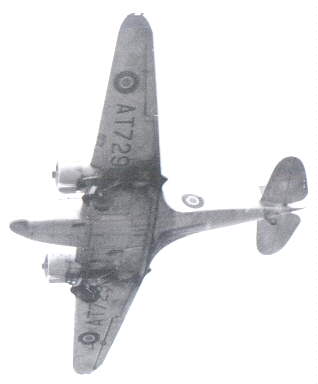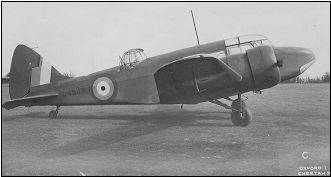Known to hundreds of RAF
& RAAF aircrew as the "Ox-box", the Oxford first appeared
in 1937 as a military development of the 1934 Envoy feeder-liner, and
was the first twin-engined monoplane trainer in the Royal Air Force. The
first Oxfords joined the Central Flying School in November 1937, and by
the time of the outbreak of World War 2 nearly 400 were in service.
 |
Production
was subsequently stepped up, Airspeed building nearly four and a
half thousand Oxfords, and with sub-contracts placed with de
Havilland, Percival and Standard Motors the total number of
Oxfords completed came to 8751.
Although used most widely in its
intended role as aircrew trainer, the Oxford gave valuable service
on communications and anti-aircraft co-operation duties, and was
also used in some numbers as an ambulance, particularly in the
Middle East.
As a trainer, it served in
Canada, Australia, New Zealand and Southern Rhodesia as well as in
the United Kingdom. |
Outwardly there was little difference
in appearance between the various mark numbers, the principal variations
being in power-plant and internal equipment. the Oxford I was a bombing
and gunnery trainer, and featured a dorsal Armstrong-Whitworth turret -
the only Oxford to do so. The Mk.II was similarly powered, and was
equipped as a navigation and radio trainer. This was likewise the
function of the Mk.V, powered by two 455 h.p. Pratt & Whitney Wasp
Juniors an was chiefly used in Rhodesia and Canada.
Airspeed Oxford Mk. I Specifications
Country Of Origin:
Purpose:
Makers:
Engines:
Wingspan:
Length:
Height:
Weight (Empty):
Weight (Loaded):
Maximum speed:
Operational ceiling:
Range:
|
Great Britain
Advanced trainer and ambulance
Airspeed (1934) Ltd.
Two 355 h.p. Armstrong-Siddeley Cheetah IX or X radials
16.26 m (53 feet 4 inches)
11.13 m (34 feet 6 inches)
3.38 m (11 feet 1 inches)
2440 kg (5380 pounds)
3447 kg (7600 pounds)
293 km/hour (182 miles/hour) at 8300 feet
5852 m (19 200 feet)
885 km (550 miles)
|
Wording from http://www.lancastermuseum.ca/airspeedoxford.html |

 photo from http://www.rcaf.com
photo from http://www.rcaf.com 
